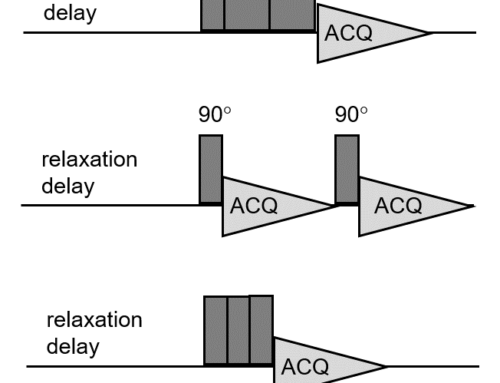Introduction
Automatic sample changers, autotunable probes, automatic shimming and locking routines, automation software and scripts have been used in solution NMR for decades. They allow us to spend less time in NMR laboratories, make a good use of nights and weekends, and maximise the number of samples to be measured. For example, a student of organic chemistry can set up a series of basic 1D and 2D NMR experiments to be collected on a series of their samples and go back to their synthetic lab. In this and next post, I would like to explain that automation and high throughput in solid-state NMR have become possible and how. I will focus on automatic sample changers and sample exchange below.
Why should you care and read this short post? If you are already a user of solid-state NMR, but you rather rely on manual operation, you may find useful tips on automating and increasing throughput. If you rather consider using solid-state NMR for the very first time and you have heard how difficult solid-state NMR is, you may realise that the automation hardware and software make solid-state NMR easier for you.
How automation and high throughput are related
If an NMR system is not equipped with an automatic sample changer, autotunable probe and automation software, the users need to operate the spectrometer manually. This means that they need to load their samples manually, tune the probe manually, setup their experiments and start the data acquisition. If they are running long experiments, they can leave the NMR lab temporarily; however, they need to come back after the experiments have finished. Then they would eject the sample, load another one, and so forth. However, if the last experiment finished in the middle of night or weekend, the user would most likely come back next morning or even next week. Meanwhile, the instrument would be idle, while still consuming electricity, liquid nitrogen and very expensive liquid helium. Obviously, this approach is not the most efficient and does not make the best use of the expensive instrument and cryogens.
What hardware is required for automation and high throughput in solid-state NMR?
Automatic sample changers (autosamplers)
The first step to automation is automatic exchange of samples. Autosamplers (Fig. 1) usually store dozens of samples out of the NMR magnet and transfer them into the NMR probe.


Figure 1. JEOL autosamplers ASC24 and ASC30.
Liquid NMR samples are typically contained in thin, long glass tubes (Fig. 2). As these tubes are rather fragile, they are set in sample holders (Fig. 2). These sample holders allow us to spin the liquids samples in the liquids NMR probes, and hence they are often called spinners or turbines. Actually, automatic sample changers were originally designed to handle liquid samples.



Figure 2. Example of liquid NMR sample (left), JEOL sample holder (middle) and sample holder with NMR tube (right).
In contrast, solid samples are typically packed in small zirconia (ZrO2) tubes (Fig. 3). These tubes are usually spun under the Magic Angle very rapidly. Therefore, they are called rotors.

Figure 3. JEOL 3.2 mm rotor for solid-state NMR.
Obviously, the automatic sample changers for liquids and the sample holders for liquid samples cannot handle solid rotors directly. How did we solve this problem at JEOL? Did we design special autosamplers for solid samples? No. We decided to share the autosamplers shown in Fig. 1 between liquids and solids. We designed so-called Rotor Carrier (Fig. 4) which has a very similar shape and weight as the sample holders for solution NMR. However, the Rotor Carrier stores the small ceramic rotor inside its body. After the Rotor Carrier has reached the top of the solids probe, it releases the rotor.


Figure 4. JEOL Rotor Carrier.
Probes for easy sample exchange
In general, there are two ways how solids rotors are inserted into solids probes. The classical way is to remove the solids probe from the magnet and manually insert the rotor into the probe. Then we need to insert the probe into the magnet. Obviously, this process is very difficult to automate. The other approach is to load the rotor from the top of the magnet as we do in solution NMR. However, this requires a special switching mechanism, because solids rotors need to be set under the Magic Angle to maximise resolution and sensitivity. We developed the AUTOMAS probe which can load solid samples from the top of the magnet when the stator (spinning module) is aligned vertically. Then the stator is automatically switched from the vertical to the Magic Angle position (Fig. 5).



Figure 5. JEOL AUTOMAS probe: loading a rotor (left), switching between the vertical (middle) and the Magic Angle position (right).
Conclusions
In this post, I discussed automation and high throughput in solid-state NMR. I focused on automatic sample changers and sample exchange. In the following post, I will describe the remaining hardware which enables us to make best use of the expensive instrumentation.
And why not try JEOL JASON software for yourself and discover how its advanced data processing and analysis tools make it easy to get great results from solid-state and many other NMR datasets?
If you wish to know more about JEOL ECZ Luminous NMR spectrometers and JEOL AUTOMAS probes, click the links. In addition, a brochure on JEOL solid-state NMR products and applications can be downloaded here.



